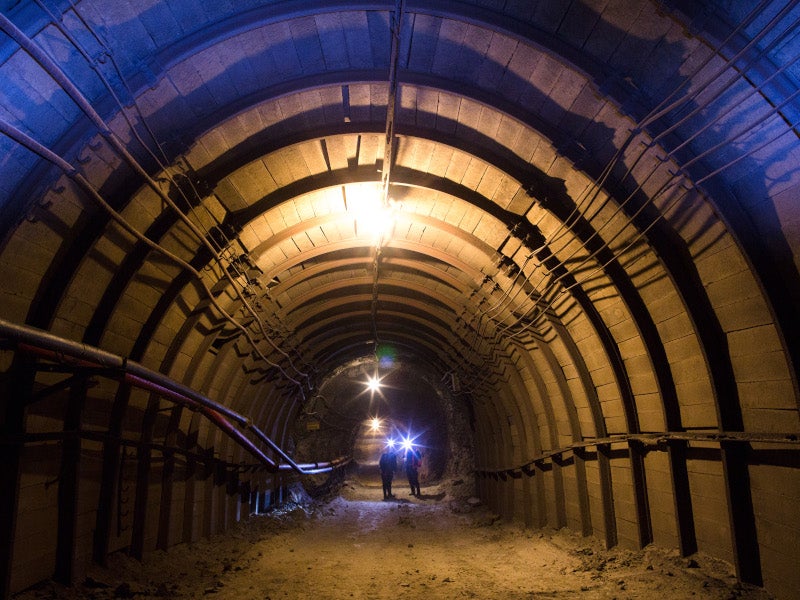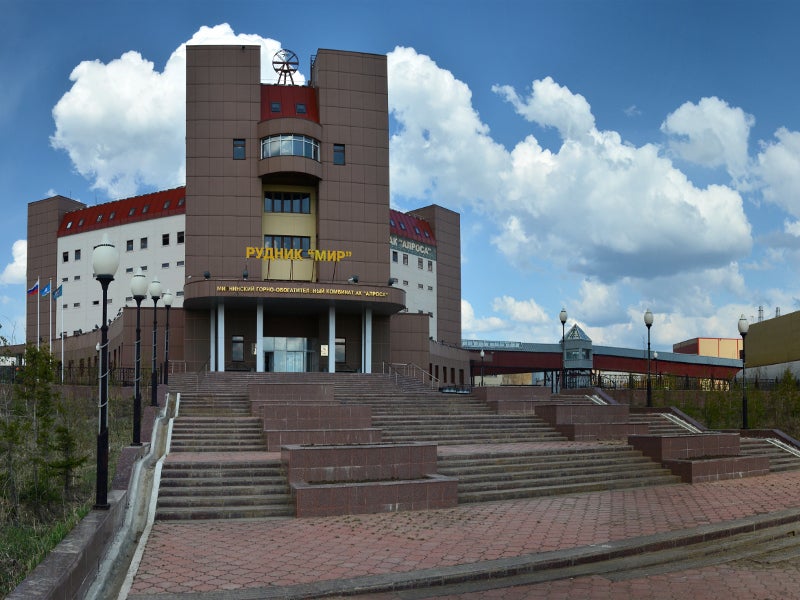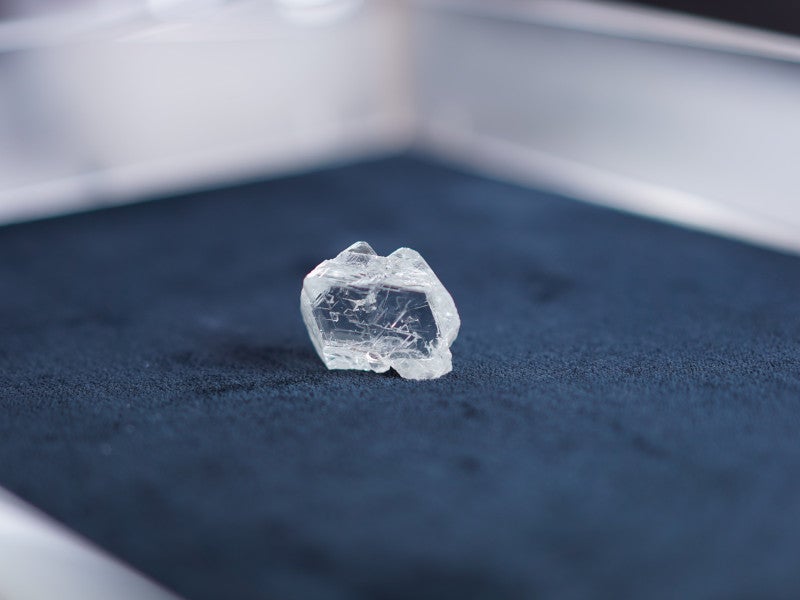The International underground mine is an underground diamond mine in the Sakha Republic (Yakutia) in the Siberian region of Russia.
The mine is owned and operated by the Mirny mining and processing division (Mirny GOK) of Alrosa. Commissioned in 1999, it is the company’s first underground mine.
The international underground mine produced 2.16 million carats (Mct) of diamond in 2019, which represents a decline of more than 37% when compared to the output in 2018. The mine has a design capacity of 0.5 million tons per annum (Mtpa) of ore until 2022.
It extracted a 118.91ct large gem-quality diamond in April 2019, after mining a similar large gem-quality 109.61ct diamond in 2017. The diamonds from the mine are known for their regular shapes and purity.
The mine reached an average content of 12 carats/ton (ct/t) during different periods, with an average diamond content of 7ct/t, which is the highest carat content per tonne of ore in the world.
International underground mine location
The International underground diamond mine is located 16km south-west of the town of Mirny within the Mirninsky district in Russia.
The mine is situated within the International pipe deposit, which is situated in the Malo-Botuobinsky diamondiferous district.
Geology of International pipe deposit
The International underground mine has a diamond grade of 8.09ct/t. The International’s pipe is characterised by a funnel shape up to a depth of 125m and transforms to almost circular at deeper levels and dips steeply to the south-east.
The ore body of the deposit comprises porphyritic kimberlite and autolith kimberlite breccia. These kimberlites have similar diamond grades, but the porphyritic kimberlite has a slightly higher crystal concentration.
International mine resources and reserves
The International underground mine produced 3.7Mct of rough diamonds in 2017, followed by 3.4Mct in 2018.
It is anticipated to undergo a drop in production ranging between 0.5Mct/y and 0.8Mct/y from 2019 to 2022.
The International pipe’s proven and probable reserves are estimated to be 7.36Mt, including 49.56Mct of contained diamond as of July 2018.
Mining method at International underground mine
The International kimberlite pipe deposit was discovered in 1969 and it underwent open-cast mining between 1971 and 1981, followed by underground mining from 1999.
The mine reached its full production rate of 500,000tpa in 2002, and the open-pit mining ceased in 2011.
The underground mine is being developed in three phases. The production in the first phase was reduced and reserves under the second phase are being excavated.
The first phase of mining is carried out at levels ranging between -200m and -560m, while the second phase involves ore excavation of the reserve remaining under the pit bottom between 155m to -200m, along with deeper-level mining between elevations of -560m and -820m. The third phase will include the extraction of ore reserves within the elevations of 85m to -155m.
The mine employs mechanised cut-and-fill method by driving drifts with continuous miners.
The extracted ore is hauled by load, haul, and dump machines, as well as transported by train to a second ore pass along the haulage level. The second ore pass feeds the production shaft to be hoisted to the surface.
Backfill is placed on retreat in the drifts and backfill material is fed through two pipelines mounted in the production shaft from where it is sent to open stopes for backfilling.
Processing at International underground mine
The ore is processed at a central processing plant known as plant no. 3, which has an annual capacity of 2Mt of ore.
The plant is undergoing modernisation and has been installed with high-pressure grinding rolls (HPGR) and two 150tph dense medium-separation (DMS) plants as part of the modification.
Upgrades also include improvements to plant automation, final recovery section, and fines recovery circuit.
Mirny GOK details
The Mirny GOK was established in 1957 and is the oldest division of ALROSA. It is based in the city of Mirny and employs more than 3,800 people.
The division extracts ore from the hard rock deposits of the Mir and International pipes, along with the Gornoye, Irelyakh, and Vodorazdelnye Galechniki placer deposits, and historic tailings from plant no. 5.
The diamond production at the division is supplemented by sands mined from the Irelyakh, Gornoye and Vodorazdelnye Galechniki placer operations.




